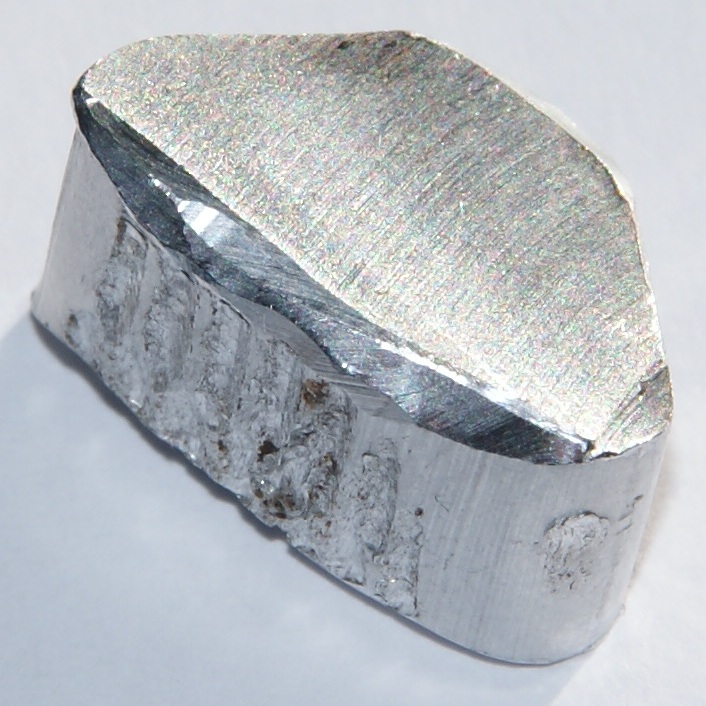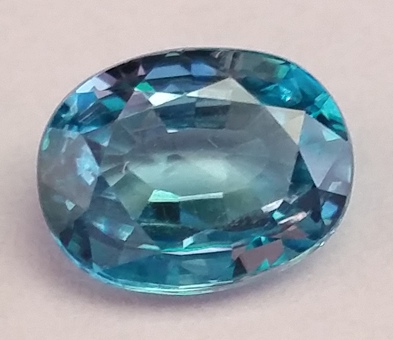|
Wöhlerite
Wöhlerite, also known as woehlerite or wohlerite, is a member of the Wöhlerite group. It was named after German chemist Friedrich Wöhler. It was first described by Scheerer in 1843, but the crystal structure was only solved by Mellino & Merlino in 1979. Once approved, it was grandfathered by the IMA. Properties Wöhlerite shows pleochroic attributes, which is an optical phenomenon. Depending on which axis the mineral is being viewed, it would appear as if it is changing colors. Looking at the mineral from the x and y axis, it appears as a nearly colorless to pale yellow one, while viewing it on the z axis, it takes up a wine-yellow color. It is a granular mineral, and has prismatic crystals that can grow up to 3 cm. It is thick and tabular on . Brøgger listed these forms to be the more frequent ones are , , , , , , , , and in 1890, although other forms observed include , , , , , , , , , , , and . It has a paragenetic mode of syenites. Some of the associated minerals ... [...More Info...] [...Related Items...] OR: [Wikipedia] [Google] [Baidu] |
Monoclinic
In crystallography, the monoclinic crystal system is one of the seven crystal systems. A crystal system is described by three Vector (geometric), vectors. In the monoclinic system, the crystal is described by vectors of unequal lengths, as in the orthorhombic system. They form a parallelogram prism (geometry), prism. Hence two pairs of vectors are perpendicular (meet at right angles), while the third pair makes an angle other than 90°. Bravais lattices Two monoclinic Bravais lattices exist: the primitive monoclinic and the base-centered monoclinic. For the base-centered monoclinic lattice, the primitive cell has the shape of an oblique rhombic prism;See , row mC, column Primitive, where the cell parameters are given as a1 = a2, α = β it can be constructed because the two-dimensional centered rectangular base layer can also be described with primitive rhombic axes. The length a of the primitive cell below equals \frac \sqrt of the conventional cell above. Crystal class ... [...More Info...] [...Related Items...] OR: [Wikipedia] [Google] [Baidu] |
Friedrich Wöhler
Friedrich Wöhler Royal Society of London, FRS(For) HonFRSE (; 31 July 180023 September 1882) was a German chemist known for his work in both organic chemistry, organic and inorganic chemistry, being the first to isolate the chemical elements beryllium and yttrium in pure metallic form. He was the first to prepare several inorganic compounds, including silane and silicon nitride. Wöhler is also known for seminal contributions in organic chemistry, in particular, the Wöhler synthesis of urea. His synthesis of the organic compound urea in the laboratory from inorganic substances contradicted the belief that organic compounds could only be produced by living organisms due to a "life force". However, the exact extent of Wöhler's role in diminishing the belief in vitalism is considered by some to be questionable. Biography Friedrich Wöhler was born in Eschersheim, Germany, and was the son of a veterinarian. As a boy, he showed interest in mineral collecting, drawing, and science. ... [...More Info...] [...Related Items...] OR: [Wikipedia] [Google] [Baidu] |
International Mineralogical Association
Founded in 1958, the International Mineralogical Association (IMA) is an international group of 40 national societies. The goal is to promote the science of mineralogy and to standardize the nomenclature of the 5000 plus known mineral species. The IMA is affiliated with the International Union of Geological Sciences (IUGS). The Association supports the activities of Commissions and Working Groups involved on certain aspects of mineralogical practice and facilitates interactions among mineralogists by sponsoring and organising meetings. In particular, the IMA holds its general meeting every four years. The last meeting was scheduled in 2022 in Lyon, France. Presidents The presidents of the IMA have been: * since 2024: Eiji Ohtani ** Tohoku University * 2022–2024: Hans-Peter Schertl ** Bochum University * 2020–2022: Anhuai Lu ** Peking University *2018–2020: Patrick Cordier ** Université de Lille *2016–2018: Peter C. Burns ** University of Notre Dame *2014–2016 ... [...More Info...] [...Related Items...] OR: [Wikipedia] [Google] [Baidu] |
Pleochroic
Pleochroism is an optical phenomenon in which a substance has different colors when observed at different angles, especially with polarized light. Etymology The roots of the word are from Greek (). It was first made compound in the German term ''Pleochroismus'' by mineralogist Wilhelm Haidinger in 1854, in the journal ''Annalen der Physik und Chemie''. Its first known English usage is by geologist James Dana in 1854. Background Anisotropic crystals will have optical properties that vary with the direction of light. The direction of the electric field determines the polarization of light, and crystals will respond in different ways if this angle is changed. These kinds of crystals have one or two optical axes. If absorption of light varies with the angle relative to the optical axis in a crystal then pleochroism results. Anisotropic crystals have double refraction of light where light of different polarizations is bent different amounts by the crystal, and therefore follows ... [...More Info...] [...Related Items...] OR: [Wikipedia] [Google] [Baidu] |
Paragenesis
Paragenesis is a petrologic concept meaning an ''equilibrium sequence of mineral phases''. It is used in studies of igneous and metamorphic rock genesis and importantly in studies of the hydrothermal deposition of ore minerals and the rock alteration (vein metasomatism) associated with ore mineral deposits. The concept and application of paragenesis, from the Greek for ''born beside'', was first applied by August Breithaupt in 1849 in his work ''Die Paragenesis der Mineralien''. The paragenetic sequence in mineral formation is an important concept in deciphering the detailed geologic history of ore deposits and metamorphic events. The sequence is worked out through detailed microscopic studies in polished ore mineral section, petrologic thin section and fluid inclusion image:Inclumed.gif, 250px, Trapped in a time capsule the same size as the diameter of a human hair, the ore-forming liquid in this inclusion was so hot and contained so much dissolved solids that when it cooled, crys ... [...More Info...] [...Related Items...] OR: [Wikipedia] [Google] [Baidu] |
Zircon
Zircon () is a mineral belonging to the group of nesosilicates and is a source of the metal zirconium. Its chemical name is zirconium(IV) silicate, and its corresponding chemical formula is Zr SiO4. An empirical formula showing some of the range of substitution in zircon is (Zr1–y, REEy)(SiO4)1–x(OH)4x–y. Zircon precipitates from silicate melts and has relatively high concentrations of high field strength incompatible elements. For example, hafnium is almost always present in quantities ranging from 1 to 4%. The crystal structure of zircon is tetragonal crystal system. The natural color of zircon varies between colorless, yellow-golden, red, brown, blue, and green. The name derives from the Persian ''zargun'', meaning "gold-hued". This word is changed into " jargoon", a term applied to light-colored zircons. The English word "zircon" is derived from ''Zirkon'', which is the German adaptation of this word. Yellow, orange, and red zircon is also known as " hyacint ... [...More Info...] [...Related Items...] OR: [Wikipedia] [Google] [Baidu] |
Microcline
Microcline (KAlSi3O8) is an important igneous rock-forming tectosilicate mineral. It is a potassium-rich alkali feldspar. Microcline typically contains minor amounts of sodium. It is common in granite and pegmatites. Microcline forms during slow cooling of orthoclase; it is more stable at lower temperatures than orthoclase. Sanidine is a polymorph of alkali feldspar stable at yet higher temperature. Microcline may be clear, white, pale-yellow, brick-red, or green; it is generally characterized by cross-hatch twinning that forms as a result of the transformation of monoclinic orthoclase into triclinic microcline. The chemical compound name is potassium aluminium silicate, and it is known as E number reference E555. Geology Microcline may be chemically the same as monoclinic orthoclase, but because it belongs to the triclinic crystal system, the prism angle is slightly less than right angles; hence the name "microcline" from the Greek "small slope". It is a fully ordered ... [...More Info...] [...Related Items...] OR: [Wikipedia] [Google] [Baidu] |
Nepheline
Nepheline, also called nephelite (), is a rock-forming mineral in the feldspathoid groupa silica-undersaturated aluminosilicate, Na3 K Al4 Si4 O16, that occurs in intrusive and volcanic rocks with low silica, and in their associated pegmatites. It is used in glass and ceramic manufacturing and other industries, and has been investigated as an ore of aluminium. Description and properties Nepheline crystals are rare and belong to the hexagonal system, usually having the form of a short, six-sided prism terminated by the basal plane. The crystals appear to have more symmetry than they actually possess, but unsymmetrical etched figures produced artificially on the prism faces indicate that the crystals are hemimorphic and tetartohedral, the only element of symmetry being a polar hexad axis. Nepheline is found in compact, granular aggregates, and can be white, yellow, gray, green, or reddish. Its hardness on the Mohs scale is 5.5 to 6, and its specific gravity 2.60–2.65. ... [...More Info...] [...Related Items...] OR: [Wikipedia] [Google] [Baidu] |
Natrolite
Natrolite is a tectosilicate mineral species belonging to the zeolite group. It is a hydrated sodium and aluminium silicate with the formula . The type locality is Hohentwiel, Hegau, Germany. It was named natrolite by Martin Heinrich Klaproth in 1803. The name is derived from ''natron'' (), the Greek word for soda, in reference to the sodium content, and ''lithos'' (), meaning stone. Needle stone or needle-zeolite are other informal names, alluding to the common acicular habit of the crystals, which are often very slender and are aggregated in divergent tufts. The crystals are frequently epitaxial overgrowths of natrolite, mesolite, and gonnardite in various orders. Properties Larger crystals most commonly have the form of a square prism terminated by a low pyramid, the prism angle being nearly a right angle. The crystals are tetragonal in appearance, though actually orthorhombic. There are perfect cleavages parallel to the faces of the prism. The mineral also often o ... [...More Info...] [...Related Items...] OR: [Wikipedia] [Google] [Baidu] |
Pyrochlore
Pyrochlore () is a mineral group of the niobium end member of the pyrochlore supergroup. Pyrochlore is also a term for the crystal structure ''F''dm. The name is from the Greek , ''fire'', and , ''green'' because it typically turns green on ignition in classic blowpipe analysis. Mineral The general formula, (where A and B are metals), represent a family of phases isostructural to the mineral pyrochlore. Pyrochlores are an important class of materials in diverse technological applications such as luminescence, ionic conductivity, nuclear waste immobilization, high-temperature thermal barrier coatings, automobile exhaust gas control, catalysts, solid oxide fuel cell, ionic/electrical conductors etc. The mineral is associated with the metasomatic end stages of magmatic intrusions. Pyrochlore crystals are usually well-formed (euhedral), occurring usually as octahedra of a yellowish or brownish color and resinous luster. It is commonly metamict due to radiation damage from includ ... [...More Info...] [...Related Items...] OR: [Wikipedia] [Google] [Baidu] |
Ultraviolet Light
Ultraviolet radiation, also known as simply UV, is electromagnetic radiation of wavelengths of 10–400 nanometers, shorter than that of visible light, but longer than X-rays. UV radiation is present in sunlight and constitutes about 10% of the total electromagnetic radiation output from the Sun. It is also produced by electric arcs, Cherenkov radiation, and specialized lights, such as mercury-vapor lamps, tanning lamps, and black lights. The photons of ultraviolet have greater energy than those of visible light, from about 3.1 to 12 electron volts, around the minimum energy required to ionize atoms. Although long-wavelength ultraviolet is not considered an ionizing radiation because its photons lack sufficient energy, it can induce chemical reactions and cause many substances to glow or fluoresce. Many practical applications, including chemical and biological effects, are derived from the way that UV radiation can interact with organic molecules. These int ... [...More Info...] [...Related Items...] OR: [Wikipedia] [Google] [Baidu] |



